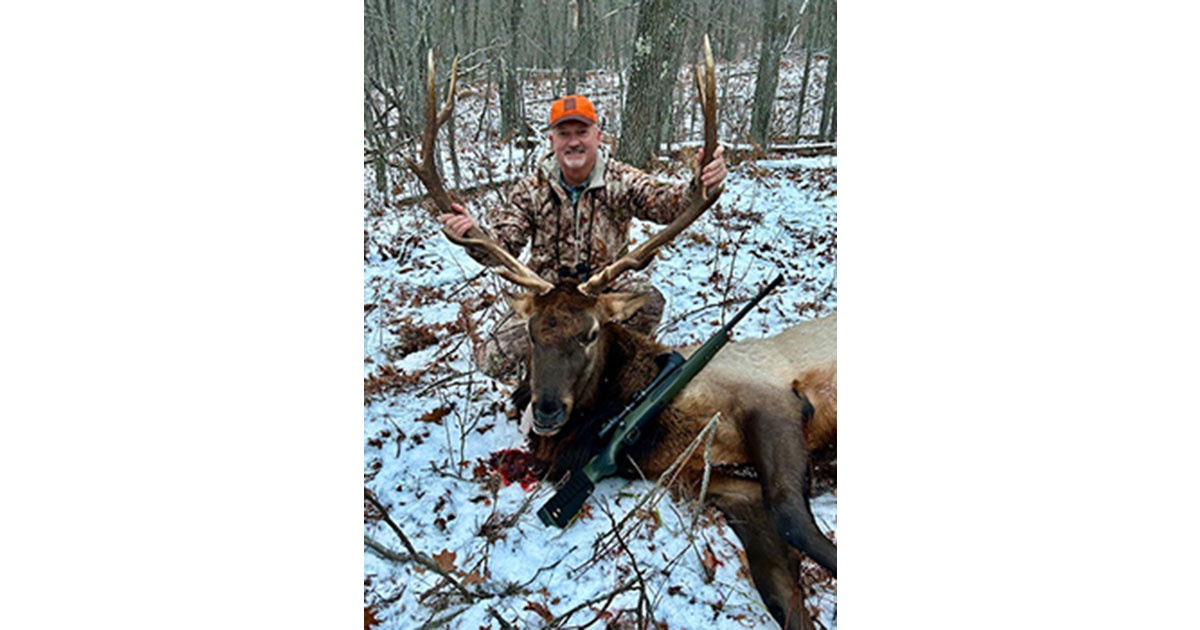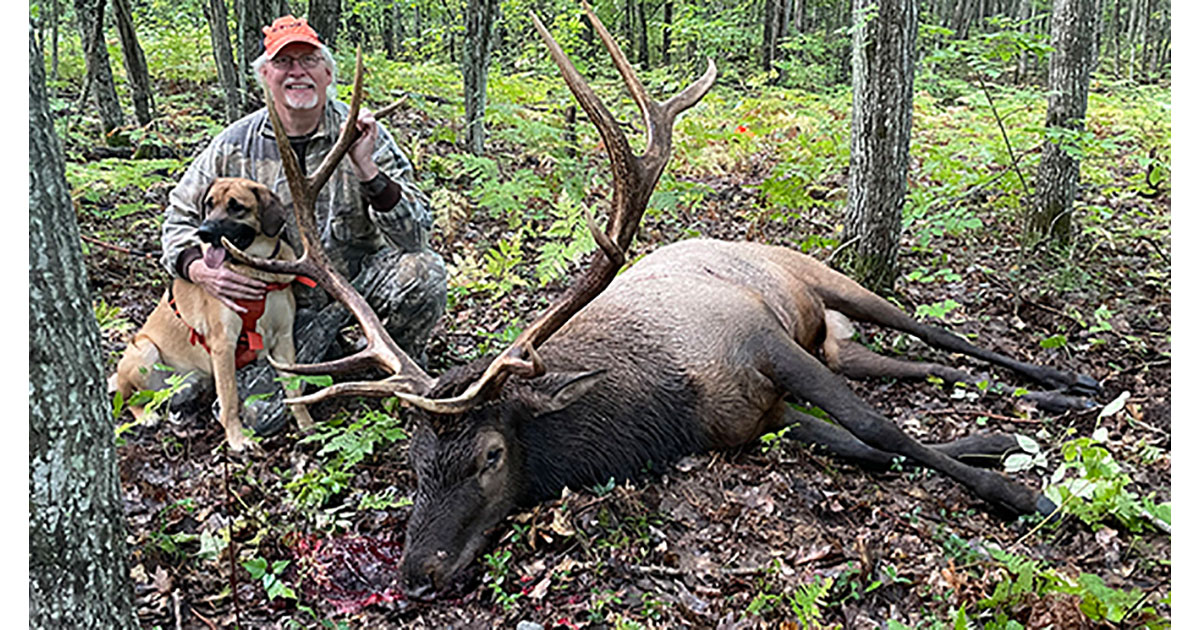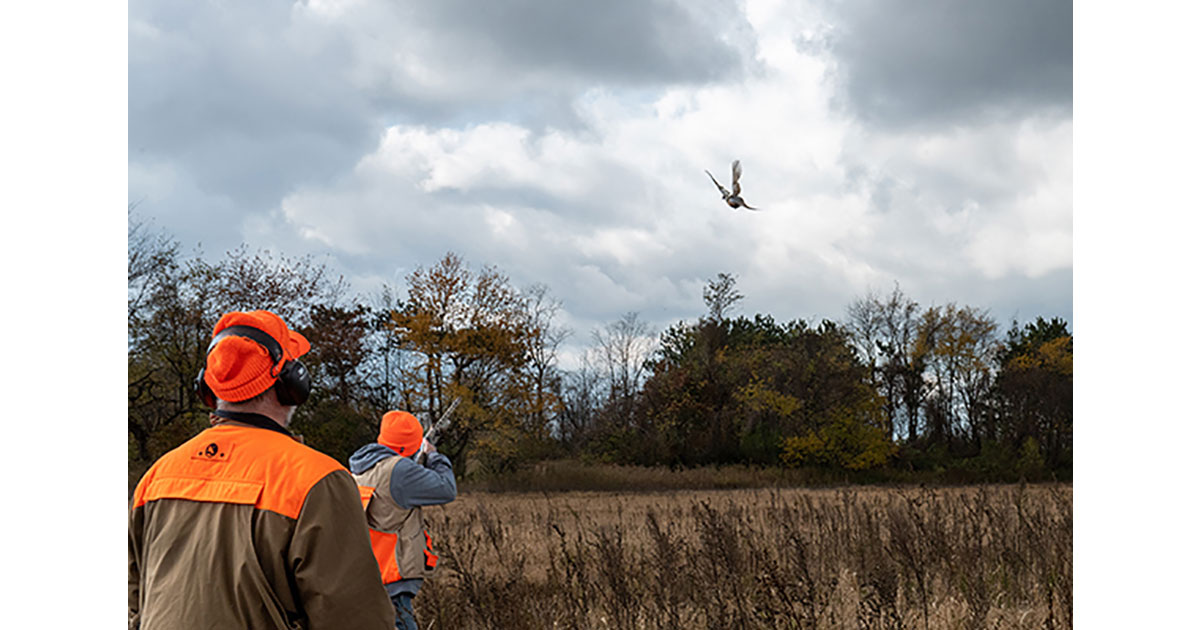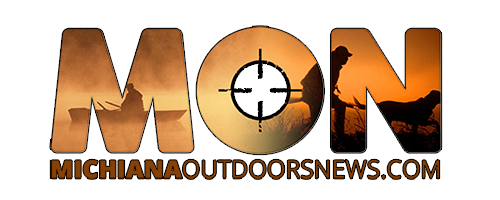- Details
MDNR Report
 Late season Michigan elk
Late season Michigan elk
After several days of challenging hunting conditions due to wind, rain and warm temperatures, 63% of elk hunters filled their tags during the December hunting season.
There were 160 elk licenses issued for this hunt period, 110 antlerless licenses and 50 any-elk licenses. State hunters harvested 41 bulls, 51 cows and five calves during the nine-day season.
“This second hunt period definitely had atypical weather conditions. During that nine-day season, the weather was unseasonably warm with very little snow cover,” said Michigan Department of Natural Resources deer, elk and moose specialist Chad Stewart. “When combined with the heavy acorn crop from the fall, it seems like the distribution and activity of elk were different than in previous years, which likely influenced overall success rates for our hunters.”
- Details
MDNR Report
 Michigan Elk
Michigan Elk
Michigan’s hunt period 1 proved to be successful for 72% of early-season elk hunters.
The 97 state hunters who took to the field over the 12-day season harvested 29 bull elk and 41 antlerless elk, including four calves. Additionally, one Pure Michigan Hunt winner harvested a bull. The success rate of this season is comparable with previous seasons.
The season began in late August and spanned 12 days throughout September and into early October. The hunting conditions were consistently warm, with temperatures above average during the second and third hunting windows.
The early season is designed to remove elk living outside of the designated elk management area, which is primarily the Pigeon River Country State Forest. The second hunt period will begin Dec. 9 for 160 hunters.
Curious about Michigan elk and elk hunting? Learn more at: https://www.michigan.gov/dnr/things-to-do/hunting/elk.
- Details
The Pheasants Forever 19th annual Youth Pheasant Hunt and Conservation Day is set for Oct. 14 at the Maier Pheasant Farm near Bremen, Ind.
The free event, hosted by the Elkhart Pheasants Forever organization, is open to any youths under age 18.
There will be other activities in addition to the pheasant hunt - firearms safety instruction, trap shooting, a .22 rifle shooting competition (guns and ammo provided), reloading tips, a trapping presentation and more.
Youths aren’t required to participate in the pheasant hunt, but those who do will be taught how to clean birds.
The program is program into two segments, an early group and a late group. The early group runs from 8 a.m. to 2:30 p.m. Arrive a few minutes early to get checked in.
The late group is from 10:30 to 5 p.m. with check-in at 10 a.m.
An adult must accompany a participant and provide a liability waiver signed by a parent or legal guardian.
Deadline to register is Oct. 8. Contact Kim Rupert 574-340-1140 to request a waiver form and register. You also can email krupert827@gmail.com with child’s name, age, desired group.
Youths should dress for the weather and wear hunter orange clothing if participating in the hunt. Hunters and trap shooters must also have a shotgun and appropriate ammunition, and all guns must remain cased until in use.
Sponsors of the event include Maier Pheasant Farm, Indiana DNR, Nappanee Conservation Club, Midwest Gun Exchange, W&W Services, Schmucker Heating and A/C, and Advanced Diesel.
- Details
By ADAM BUMP, Upland gamebird specialist
Michigan Department of Natural Resources
 Michigan Pheasant hunting
Michigan Pheasant hunting
Although many may have trouble believing it now, the opening day of ring-necked pheasant hunting was once like opening day of deer season in Michigan.
Thousands looked forward to mid-October. People planned vacation days in advance to make sure they could hit the farm fields and grasslands. Kids skipped sitting in classrooms for a chance to hear the burst of strong wings and the telltale cackle of a pheasant rooster.
Pheasant hunting was king for many hunters in Michigan’s farmlands.
There are still many active hunters, although admittedly a bit slower-moving and probably with a few gray hairs (at least), who remember the heyday of hunting wild pheasants here.
In 1944, Michigan’s pheasant harvest topped 1.4 million birds. An average of over 1 million birds were harvested each year from 1937-1959. Small game hunters during that same time numbered between 500,000 and 700,000.
Sadly, over the past seven decades, wild pheasant numbers have declined in the state.
This change was predictable, as Michigan’s agricultural landscape looks nothing like it did in the 1940s and 50s.
Back then, farm country was expansive. Few tillable acres in the southern third of the state were not actively farmed. Even some areas that were difficult or impossible to be farmed were still under the plow or under hoof and being used as pasture for cattle, sheep and other livestock.
Farms had smaller fields, with grassy or shrubby fencerows dividing those fields. Many different types of small grains were grown, rather than the modern landscape of large fields with corn, soybeans and wheat dominating Michigan’s croplands.
Farming practices were different too.
Farming practices were less efficient, and leftover grain and some wildlife cover often remained in the fields. Some farms still used fallow fields in their rotation, giving fields a rest from growing grain crops and allowing those fields to go unworked for a year or more – inadvertently providing food and nesting cover for pheasants.
As practices slowly changed, and as some fields were abandoned and eventually matured into forests, pheasant numbers declined.
In 2017, the Michigan Department of Natural Resources estimated that 12,855 pheasants were taken in the hunting season by only 16,443 pheasant hunters. A far cry from the peak in the 1940s.
The DNR has been actively managing habitat and is a primary member of the former Michigan Pheasant Restoration Initiative (now the Michigan Grassland Coalition), co-chairing the group with Pheasants Forever.
This coalition partners with agencies, nongovernmental organizations, landowners and others to promote the enhancement and creation of grasslands for the benefit of pheasants and other grassland species.
- Details
IDNR Report
Applications for the 2023 Put/Take Pheasant Hunts open Wednesday, at 7 a.m. EST.
It will continue to the end of the Put/Take Pheasant Hunt period or until hunts sell out.
The hunts take place from Nov. 18–26. Registration costs $30 per registered hunter and is first-come, first-served. Once the daily hunter quota is reached, the area becomes unavailable. Hunters should print their registration confirmation sheet and bring it with them on the day of their hunts. The bag limit is two pheasants per person each day.
The Fish & Wildlife areas (FWA) participating in the Put/Take Pheasant Hunts are Atterbury, Glendale, J.E. Roush Lake, Pigeon River, Tri-County, Willow Slough, and Winamac. To find out more information regarding the Put/Take Pheasant Hunt, please contact the property at which you are interested in hunting. For more information, register online at https://www.in.gov/dnr/fish-and-wildlife/hunting-and-trapping/reserved-hunts/#Put_and_Take_Pheasant




